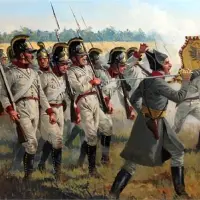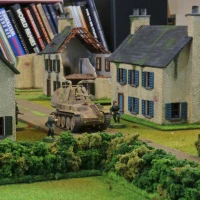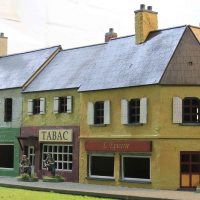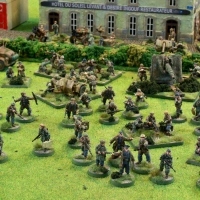
After all those posts about my Möckern / Völkerschlacht von Leipzig project, I felt that now it is time to go into some detail. In the fall of 2010 the only thing I knew was that I wanted to start with some Prussian forces for the Völkerschlacht von Leipzig (Battle of Nations). The books I had read so far did not really give me an idea what would make a good wargame or not. So I approached Martin Kelly (http://befreiungskriege.wordpress.com/) about some suggestions. His first idea was Möckern (and reading up on it afterwards a good one, too). It is not an obscure part of the battle, but rather one that many historians say was decisive for the whole battle. It featured a nice mix of units for the Prussians and some interesting ones for the French. The battle for the village itself and adjacent fields had a small enough footprint, but can easily be expanded. And if you only start with the first two attack waves it means a manageable amount of minis.I decided to depict just the action inside the village and east of it and only the first two attacks, which took place between roughly 1300h and 1500h. If I should find the time to paint the minis from 2nd and 7th Brigade (1st Prussian Army Corps) in time for Crisis 2013 I might replay the whole battle, but I doubt I shall.

Prussian Infantry at Möckern
Finding the basic numbers and units involved was easy enough, especially with the Nafziger Collection (Nafziger Collection at the United States Command and General Staff College) being public domain these days. What proved much more difficult is finding out the command structure of the Prussian units involved. The Prussians practiced something that would be the hallmark of any German army till the present day… the ability to form battle groups as need be, which would be led by the most capable officer for the job regardless of rank. In this sense a unit commander would at times command the whole brigade while the commanding officer on paper would command units outside his command or just part of his command. In this case it was aggravated by the fact, that the units involved came from von Yorcks Advanced Guard, which was a huge body of troops (ten infantry units, five cavalry units and two artillery batteries) nominally under the command of a Oberst (Colonel). This confusion only improved a couple of weeks ago when I got into contact with Wolfgang Meyer, who is doing research on the very same part of the battle as part of the Croebern Project (www.croebern-1813.de / this is one massive diorama of the Battle of Nations that you really must check out if you have not already seen it!!!). He was able to provide me with the after action reports of the units involved. Reading those gave me a clear idea how units were subdivided and who commanded what.
A few words before I go on to show you the “rosters”. The number of miniatures refers to the number of men in the unit divided by 20 (we will be using the Republic to Empire rules which work with this ratio). You will notice that sometimes these numbers have been rounded up or down to create units without odd numbers of mins where possible. Within a brigade or detachment this equals out.
The number of skirmishers is dictated by the rules. Some units are too small to deploy skirmishers, so they have none. Neither do the Prussian Jäger or French Légère, since they are allowed to deploy the whole unit as skirmishers if they like. Numbers underlaid in green denote units that are already painted and finished (still a lot to do :-/).
I have not assigned unit qualities yet. If you read accounts from either side, you will find that they all praised their own units and those of the enemy (although the French were not always too kind with their own officers). Since I do not want superman battling each other, this will be ironed out in a few test games later on.
So on to the Prussians:

Prussian OOB at Möckern (1300h - 1500h)
The units above are grouped together as they were during the battle. The detachment (not an official term, but the way I chose to call it) under Major von Klüx was involved in the first assault on the village. For the second it was reenforced by the Leib-Grenadierbataillon.
As you can see the official commander of the whole Advanced Guard chose to lead the cavalry during this battle.
I am not sure if I will paint the Ostpreussische Nationalkavallerie. Right now there are no suitable minis from either Calpe or the Perrys on the market. If it remains like that, the scenario will have to make do without them or see them replaced by the Lithuanian Dragoons from the cavalry reserve. Not that it really matters since the cavalry did not take an active part in the battle at this stage, but was kept in reserve. As a result players will only be able to make limited use of them in the game.
For those interested… I was also able to find out who commanded which unit for most of the formations involved:

Prussian Commanders at Möckern
Now on to the French:

French OOB at Möckern (1300h - 1500h)
As you can see… a much simpler command structure. Although both Générals de Brigade have to command pretty large formations (seven and six battalions). So I might have to add sub-commanders to make them manageable.
For the Marines from the 2nd Brigade I will use normal infantry units as stand-ins. As you have seen in earlier posts, these men had pretty special uniforms and I can not see painting another 136 minis on top of the 66 I already have, that will only be useful for this game. I hope this can be forgiven!















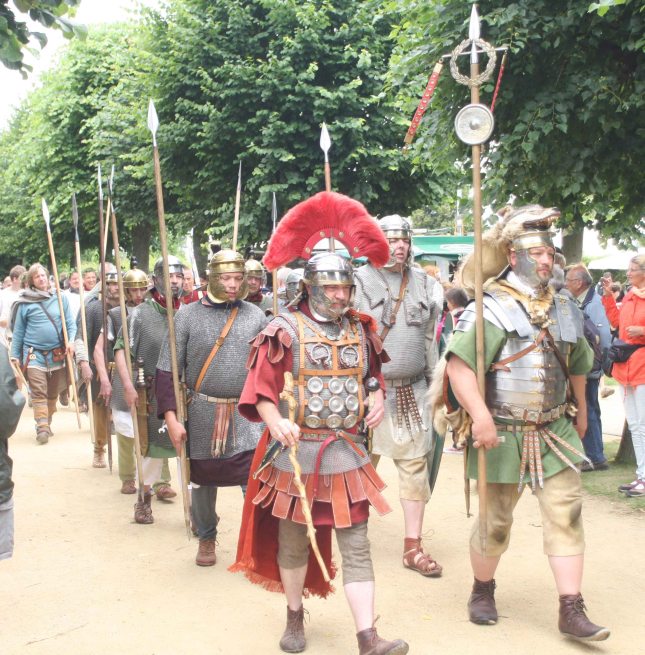

















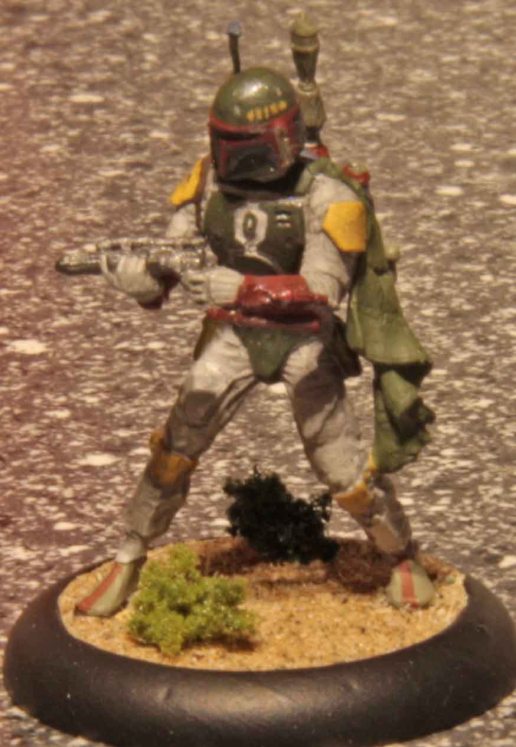



























![Мир — добродетель цивилизации, война — ее преступление. Виктор Гюго Peace is the virtue of civilization. War is its crime. Victor Hugo [Infront of the Reichstag] Мир — добродетель цивилизации, война — ее преступление. Виктор Гюго Peace is the virtue of civilization. War is its crime. Victor Hugo [Infront of the Reichstag]](http://pics.livejournal.com/sergey_larenkov/pic/0006fwdp)





















